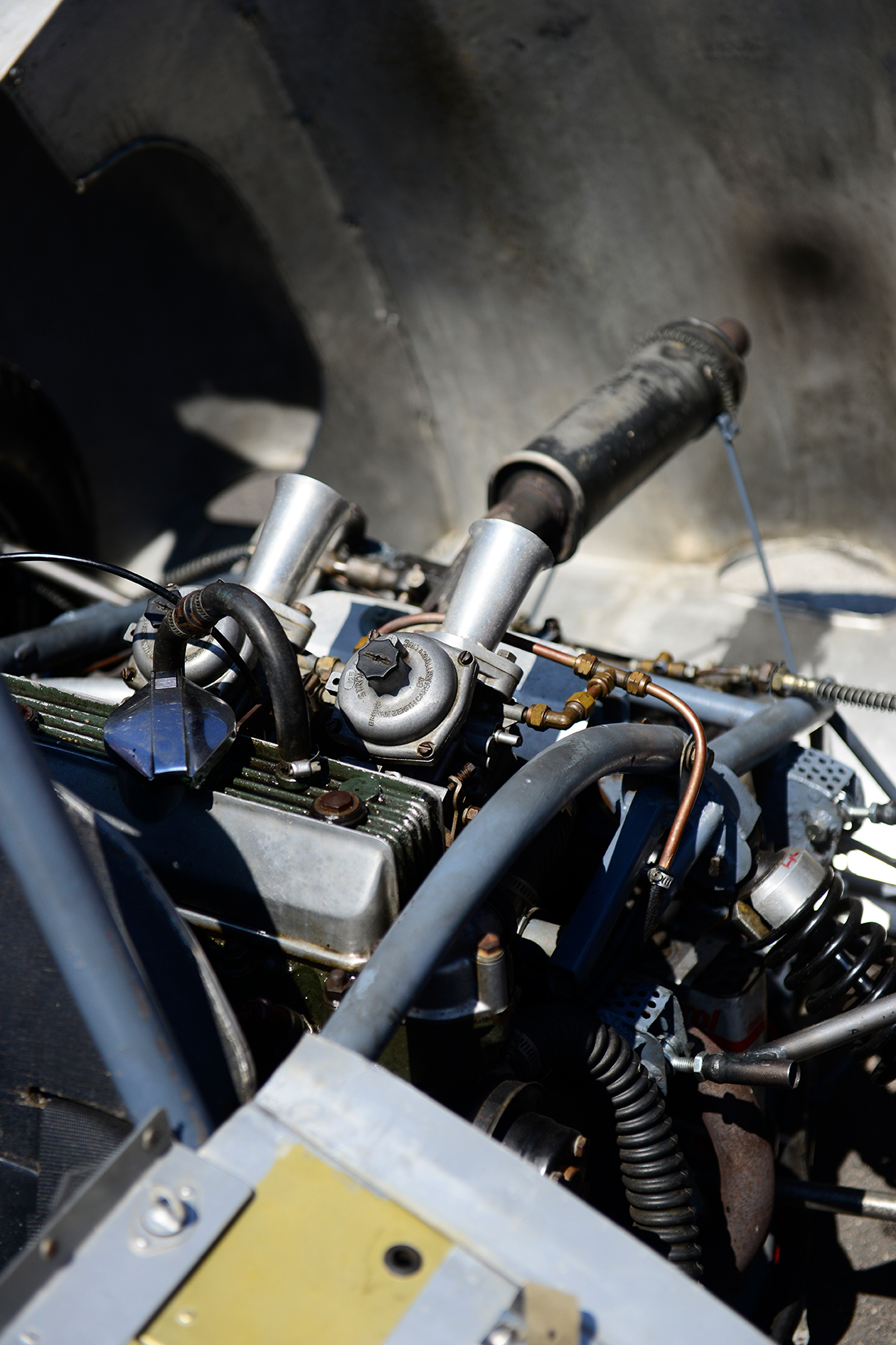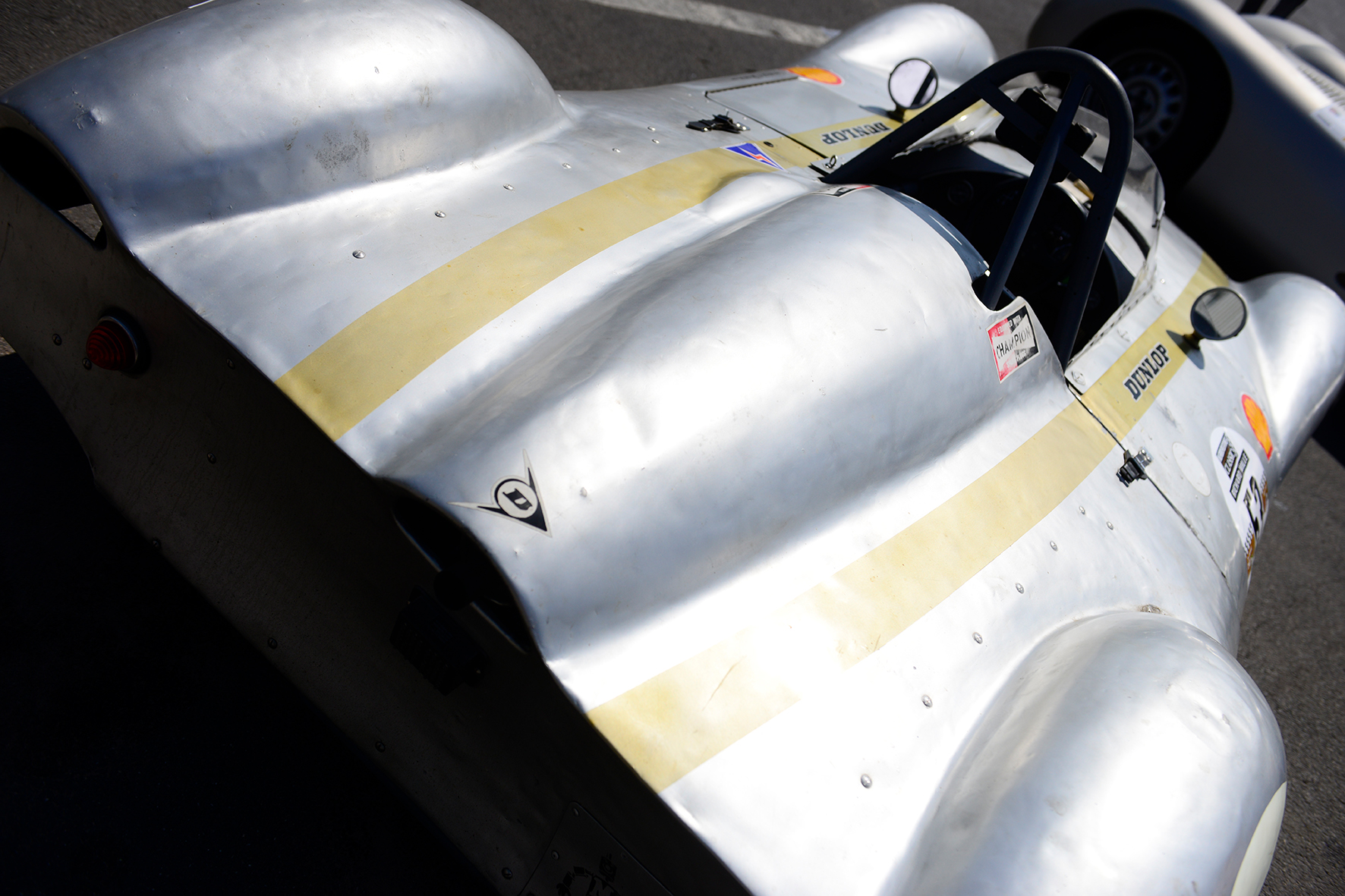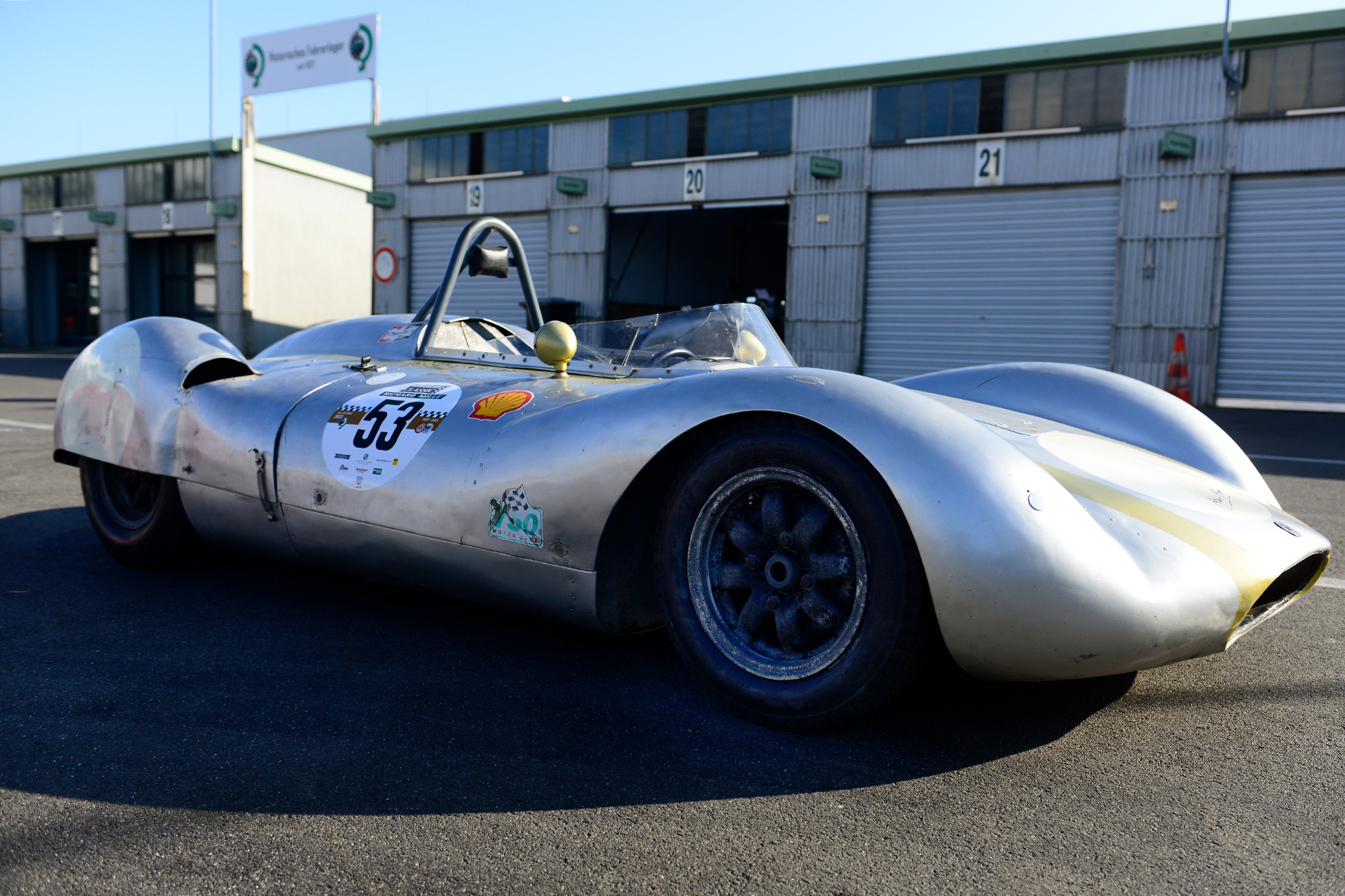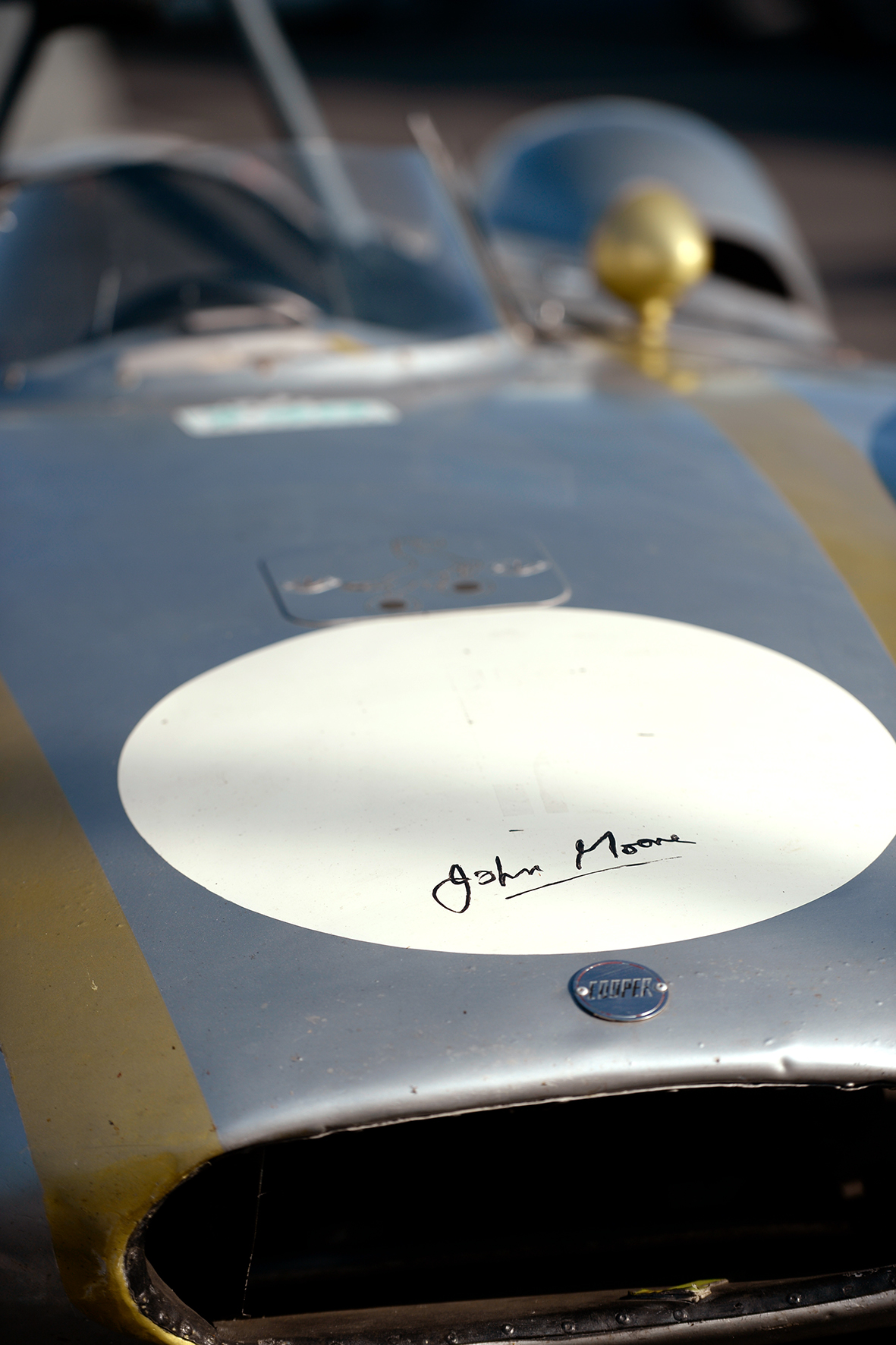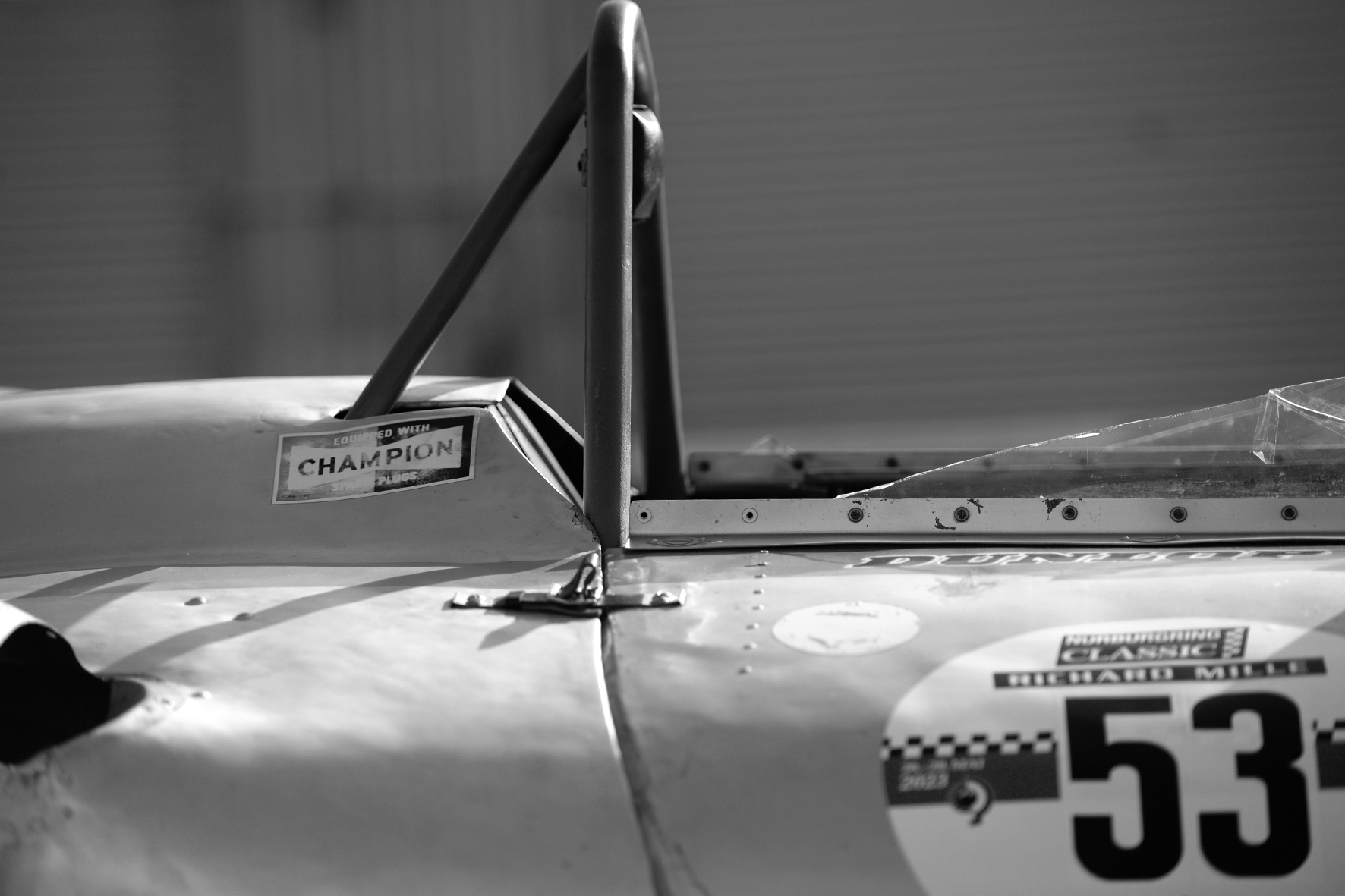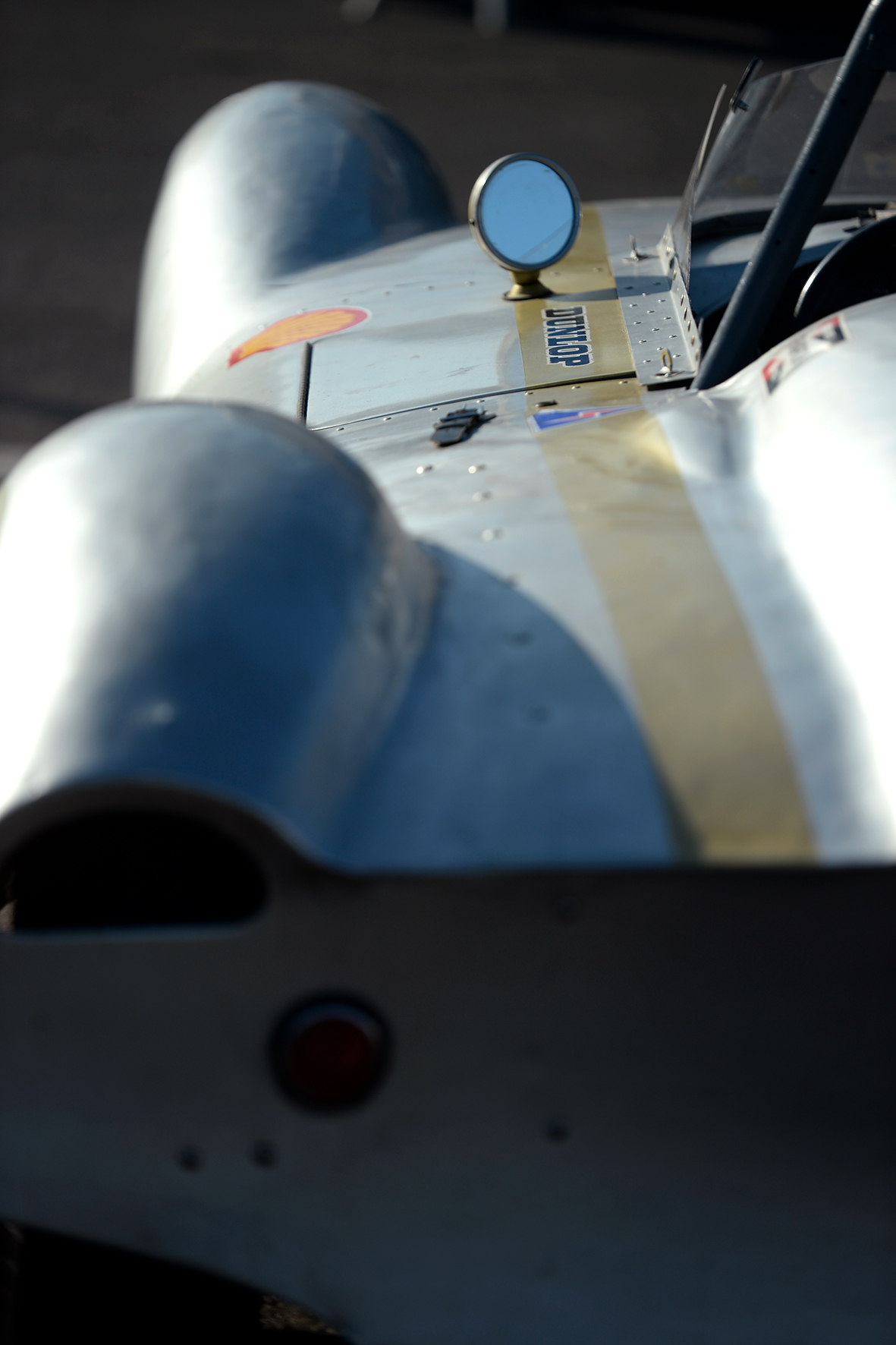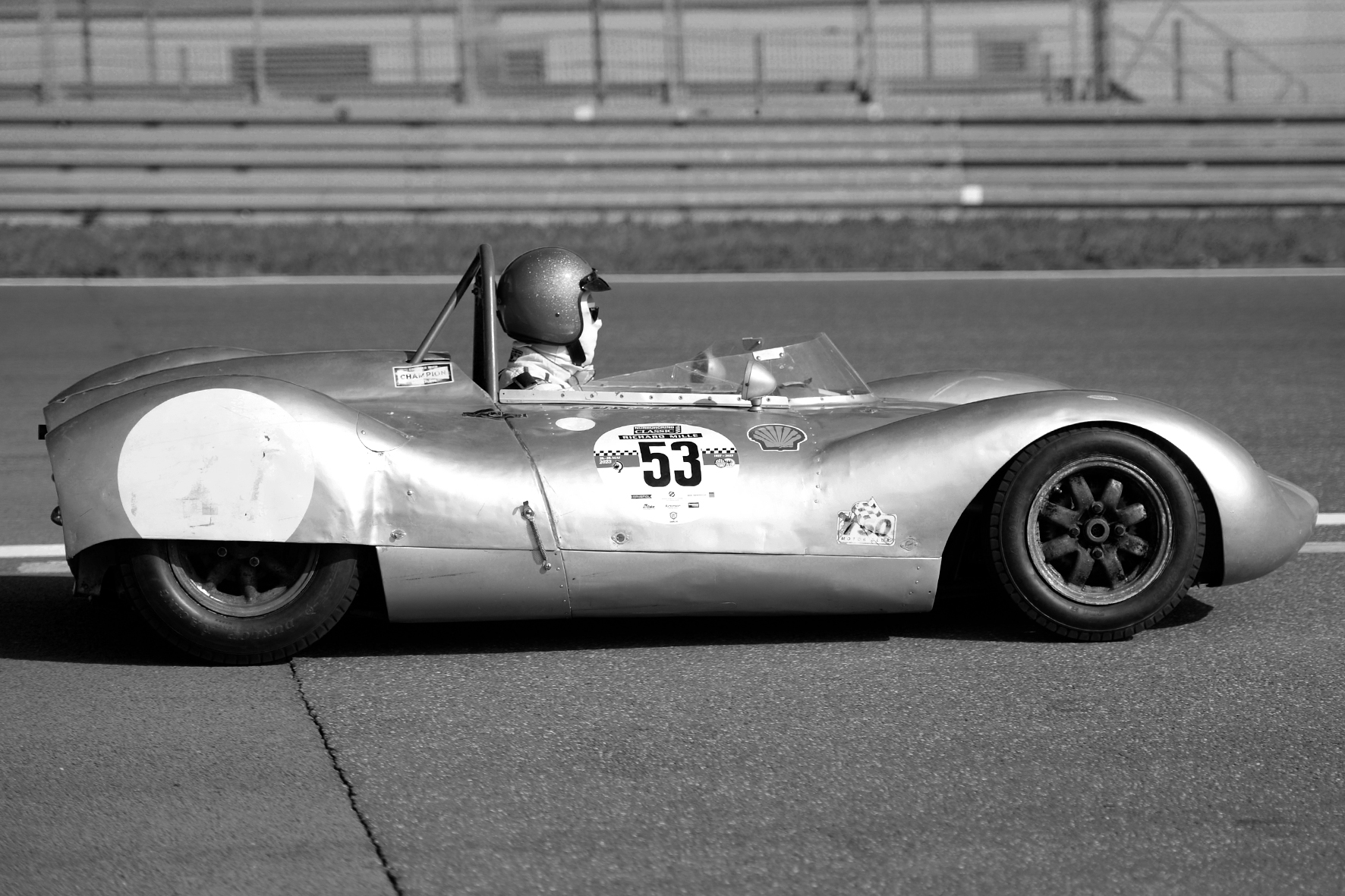At last year’s Nürburgring Classic Festival, I discovered a wonderful Cooper Bobtail racing car on Sunday. I’ve always liked this little sports car, especially the rear end is wonderfully curved and unique.
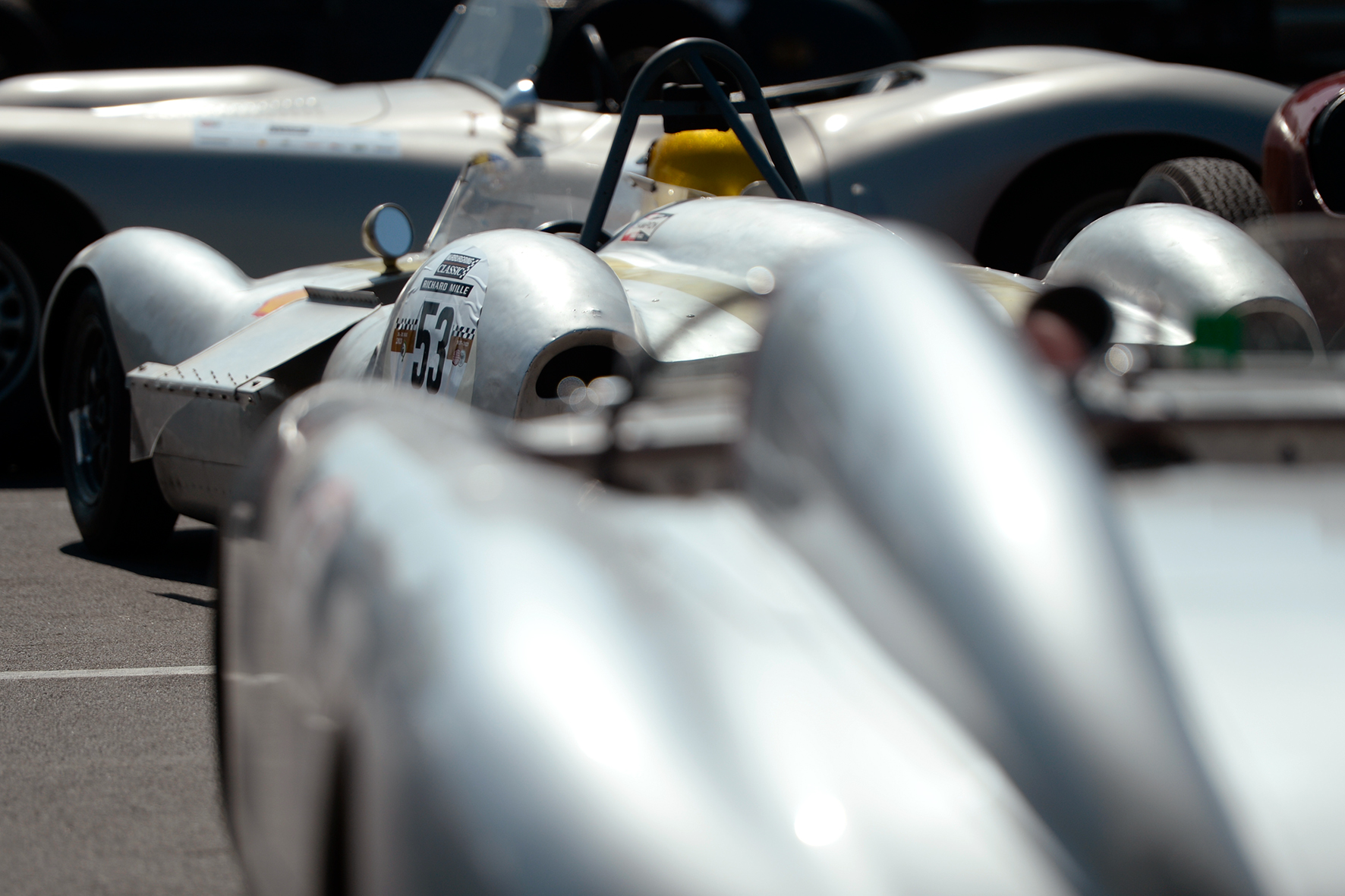
Unfortunately, I was only able to speak to the owner of the Bobtail briefly. He told me that he “found” this racing car three weeks ago and that this Nürburgring weekend was the first public appearance. I proposed to keep this gem as it is, with all its patina, the small and large dents in the body and I was happy to hear that he intends to do the same. In times when the perfect restoration still seems to be considered as the non plus ultra, it is nice when the traces of use from the history of a racing car can be seen and felt.
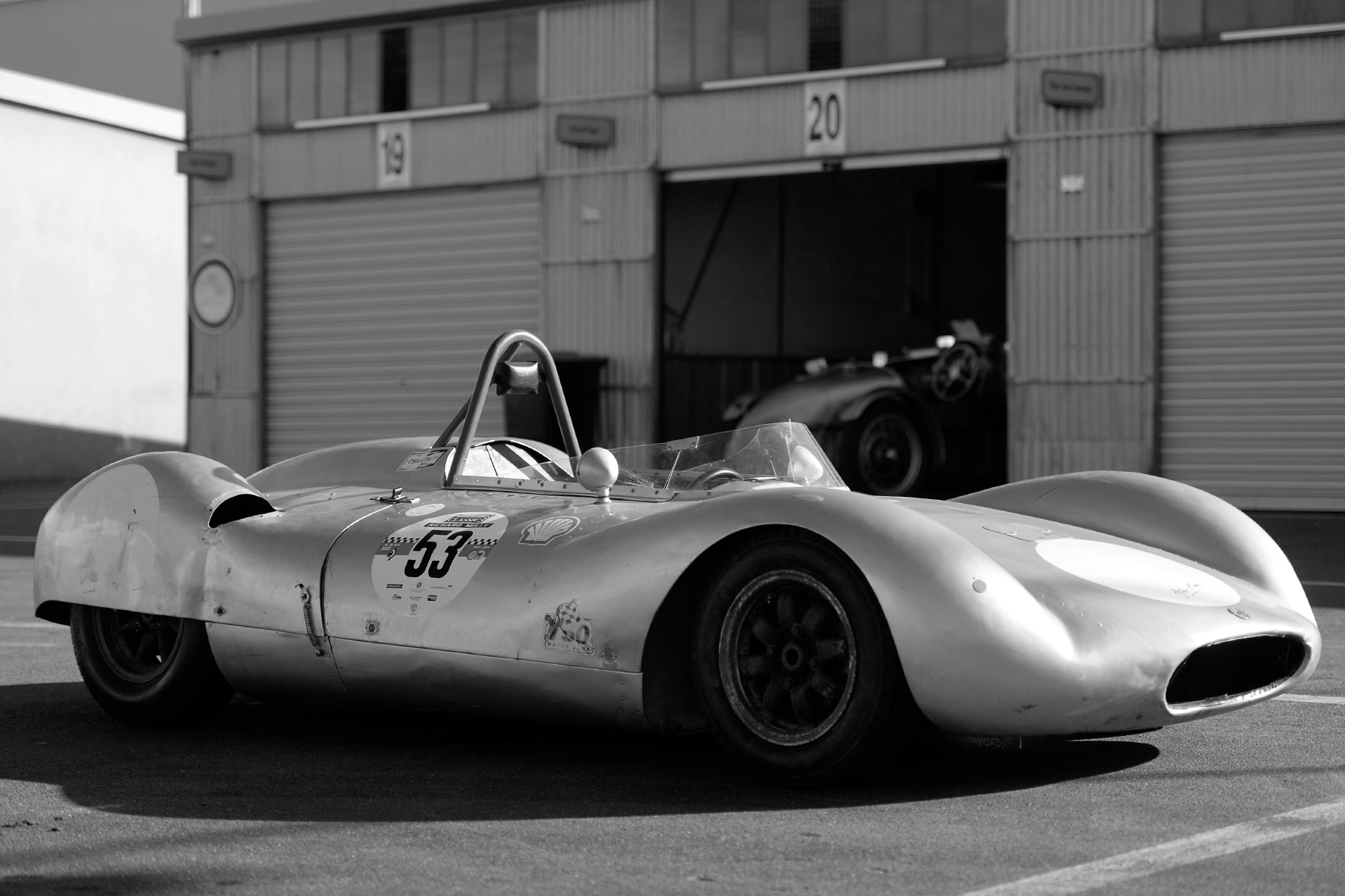
The little Cooper Bobtail was silver with two gold stripes running down the cockpit. Everything about this racing car looks small and fragile, the tubular space frame has a very small diameter. And this Cooper has performed well over the years.
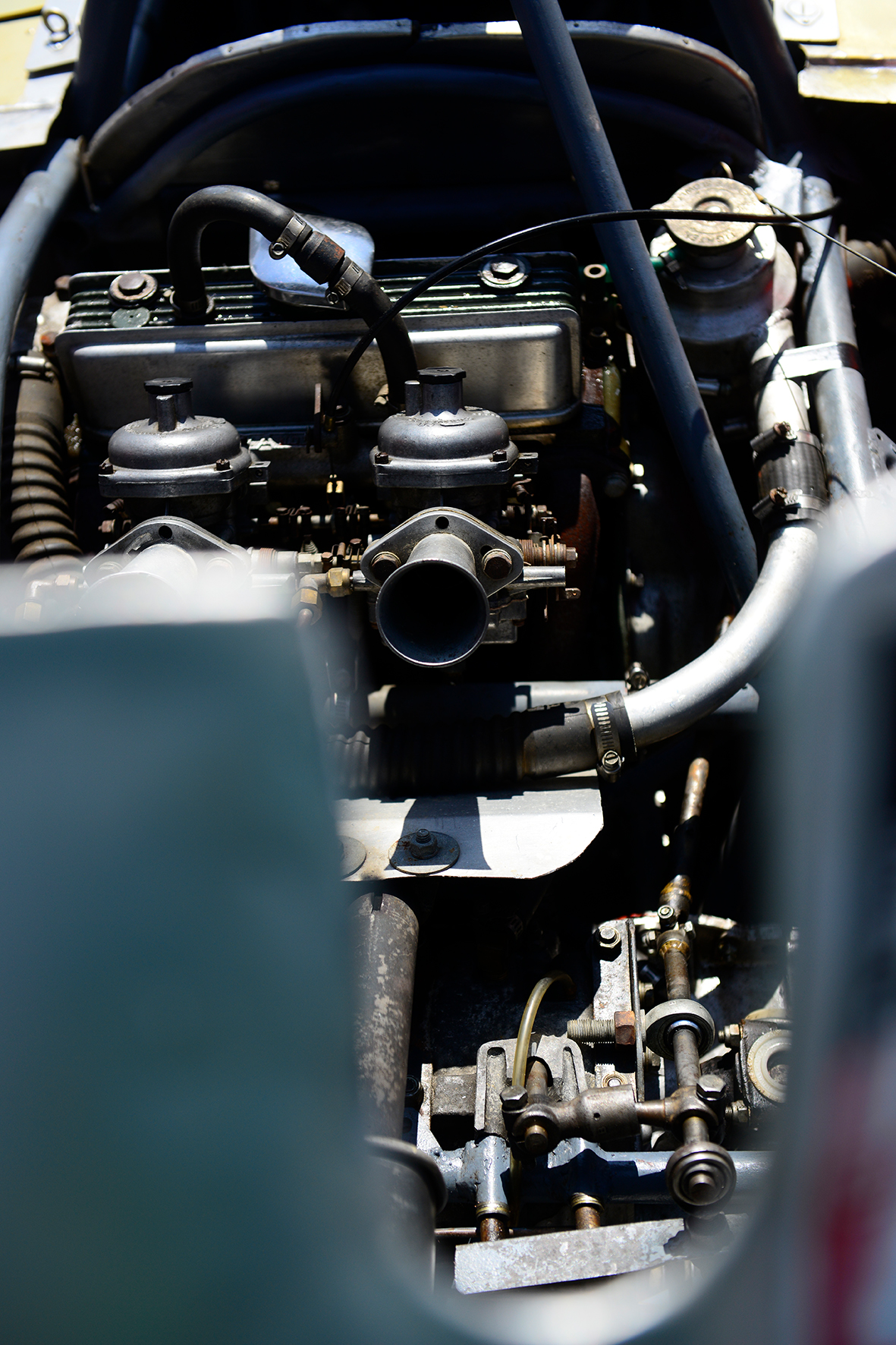
I can’t say whether this example has an exciting racing history, whether perhaps one or more famous pilots sat there at the wheel, or whether legendary races were won with it. But the optical condition testifies to an exciting, eventful life.

Shortly after the end of World War II, British racing car designer Charles Cooper and his son John began building single-seater racing cars for Formula Junior and Formula 3.
Small sports cars were added later, for example the T39 model, the Cooper Bobtail from 1955. The design concept had taken some of the monopostos, the space frame, the 15 inch wheels, the drum brakes, independent suspension for all four wheels, but the engine was not placed in front but behind the driver. The streamlined body was made of aluminum. The Cooper Car Company tried to save weight through by an extreme lightweight construction and this ensured a very good balance and handling.

Over the years of the active racing career of the type T39 Bobtail, they were registered at 343 racing events, there were over 600 individual races and the Cooper T39 achieved 82 overall victories and 40 class victories.
In the 1950s different teams drove the model, especially in national British sports car races, but also in the long-distance races of the sports car world championship.
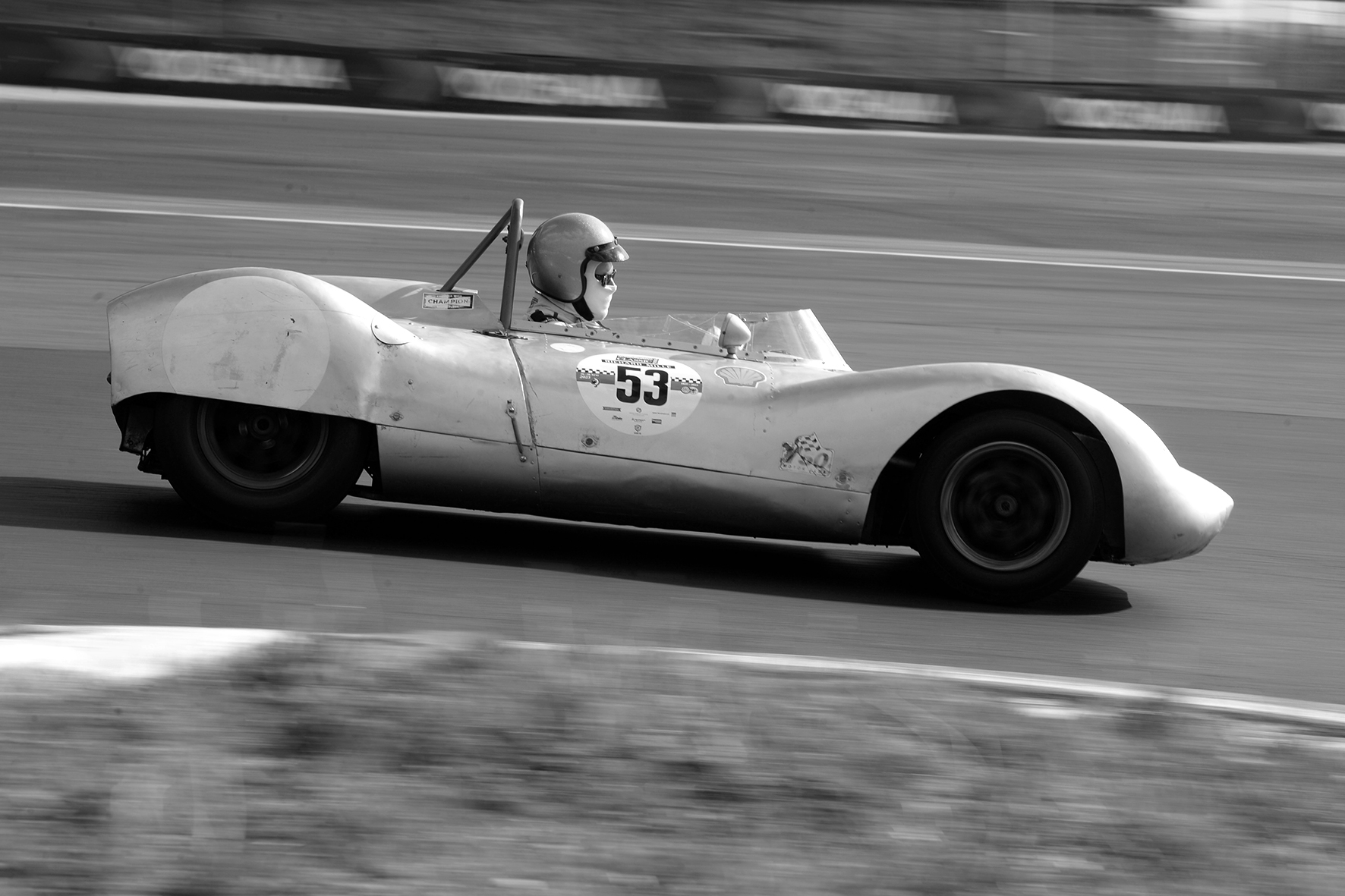
A T39 was entered for the first time at the Easter race in Thruxton in 1955. At the wheel of the factory car was Ivor Bueb, who finished third behind Les Leston and Kenneth McAlpine (both on a Connaught AL/SR). Bueb also clinched the first victory; he won a race at Brands Hatch two weeks later.
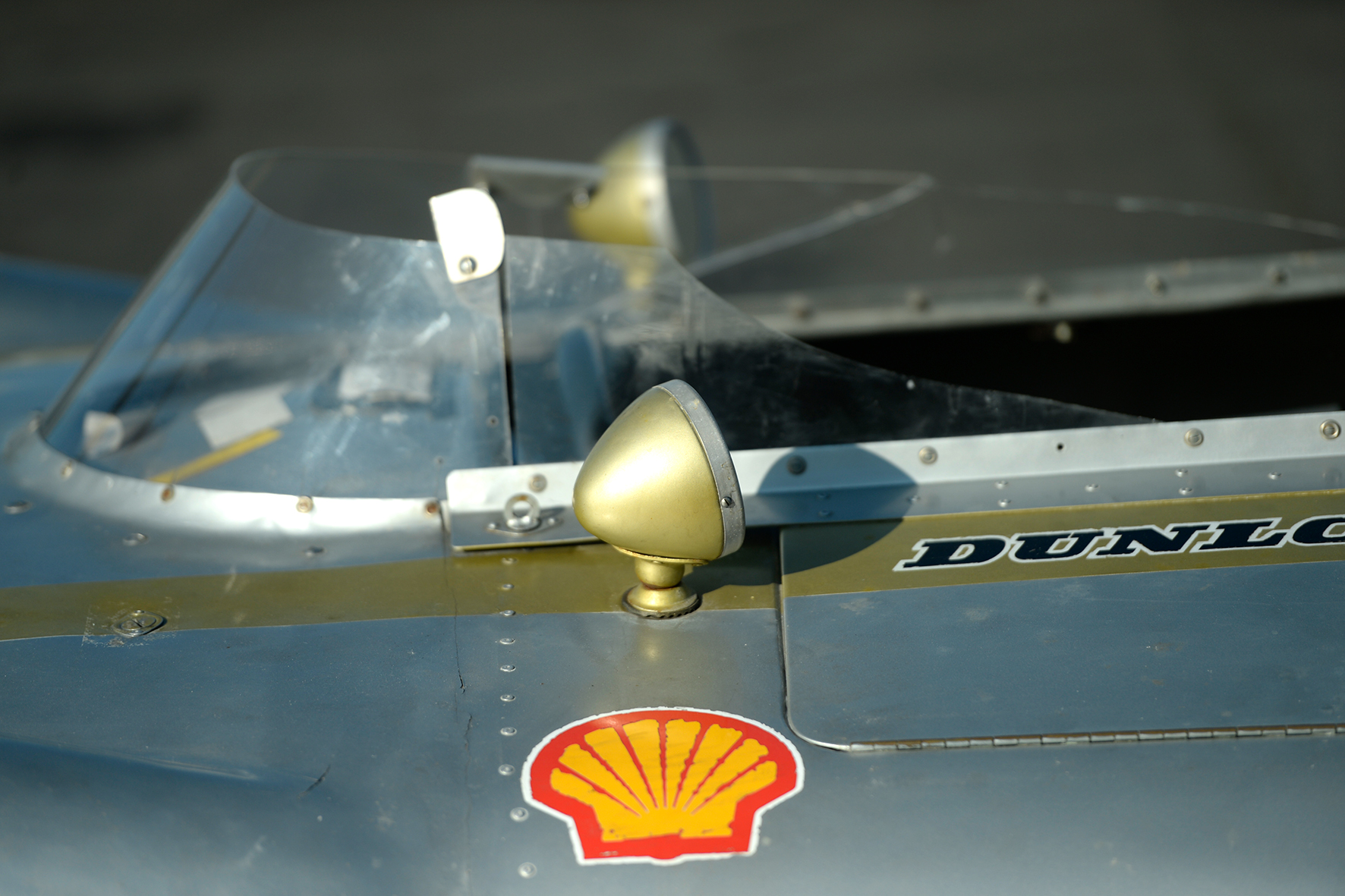
In 1956, Leech Cracraft and Red Byron finished 21st overall at the Sebring 12 Hours and won the class for sports cars with displacements of up to 1.1 liters. At the 1956 Reims 12 Hours, Stirling Moss and Graham Hill drove a works T39 but retired. At Le Mans, Ed Hugus and John Bentley finished eighth in the final standings. This list could be continued for a long time, because the T39 were used successfully until the mid-1960s.
So this wonderful Cooper T39 Bobtail contributed to this successful period of racing. It was a very nice encounter with a “witness”, a car which proudly presents his story and his age. Find out more about out photographer Ralph Lüker.

